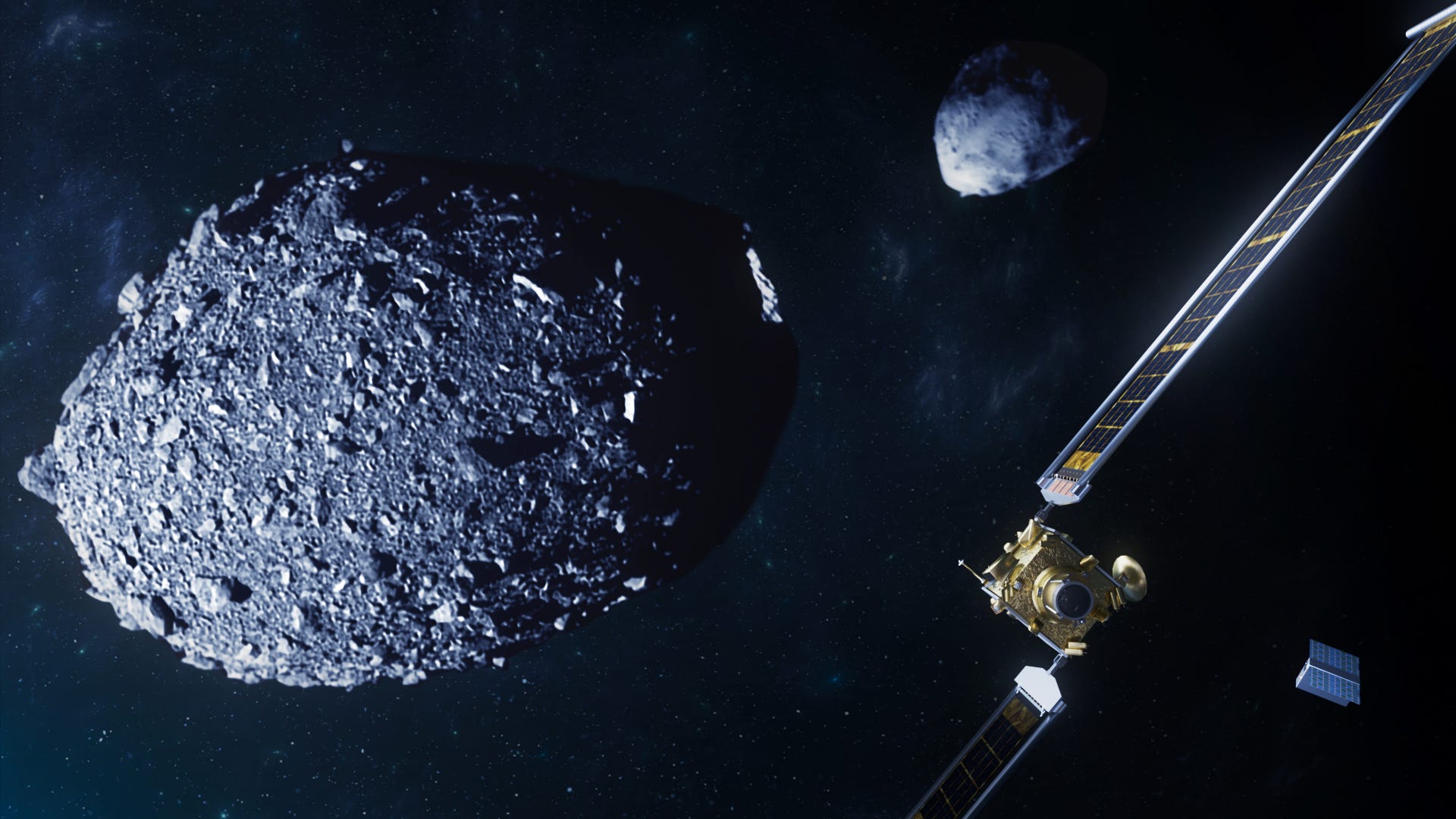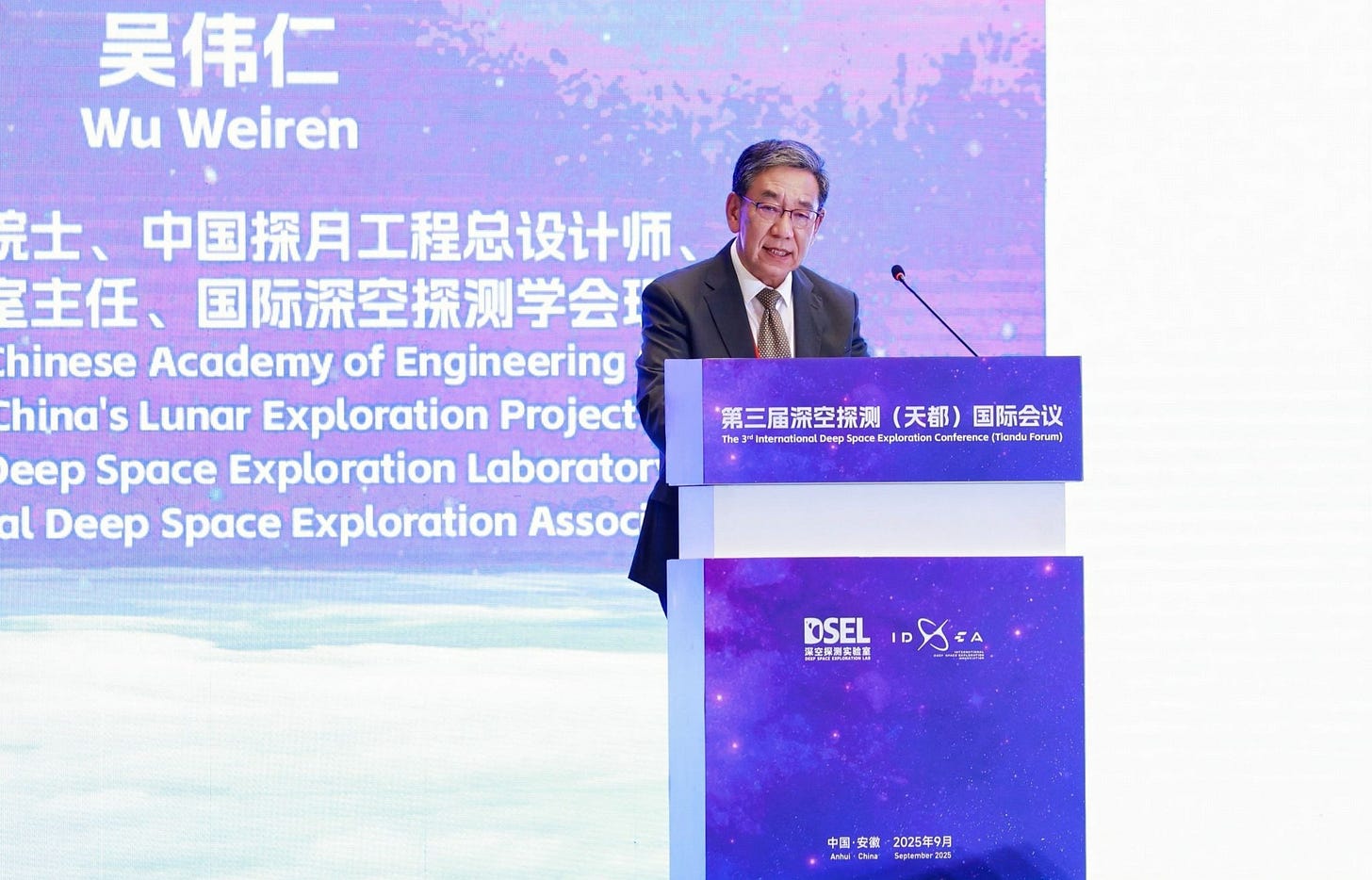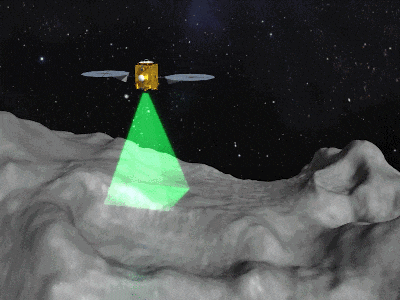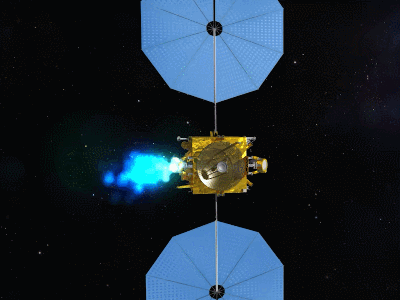How China Plans to Defend Earth From Asteroids
Efforts to do so have recently been initiated.

Every few years, Earth faces a notable asteroid scare via the discovery of previously unseen near-Earth objects. The most recent was asteroid 2024 YR4, peaking at a 3.1% chance of hitting our blue dot before it was refined down to a miss, instead with a 4% chance of slamming into the Moon.
Those chances of impact have been currently deemed safe enough, but with activity on and around the Moon set to grow through the 2030s, a way to deflect hazardous asteroids is becoming increasingly necessary. Recognising that, NASA performed its Double Asteroid Redirection Test (DART) in 2021-2022, throwing a 610-kilogram satellite into asteroid Dimorphos (orbiting larger asteroid 65803 Didymos) at 6.6 kilometers per second (about 4.1 miles per second). NASA’s redirection test was hailed as a success, having slowed Dimorphos’ orbit by 33 minutes, also demonstrating the high-speed impact method for planetary defense.
A few months after the DART mission began, China’s State Council Information Office (国务院新闻办公室) released a white paper titled “China's Space Program: A 2021 Perspective” (released January 2022), broadly covering the nation’s space efforts in prior years along with laying out some future projects, including asteroid deflection and planetary defense. Points relevant to defending Earth from Asteroids were:
“China supports the work of the Beijing office of the United Nations Platform for Space-based Information for Disaster Management and Emergency Response, and has participated in the activities of the International Committee on Global Navigation Satellite Systems in an in-depth manner. It has joined international mechanisms such as the Space Missions Planning Advisory Group and the International Asteroid Warning Network.”1
“China will actively participate in discussions on international issues and the development of relevant mechanisms, such as those in the fields of space environment governance, near-earth objects monitoring and response, planet protection, space traffic management, and the development and utilization of space resources.”2
China also committed itself to initiating a planetary defense mission within five years of the papers’ release, studying plans for establishing a near-Earth object defense system, increasing the capacity of near-Earth object monitoring, cataloguing, early warning, and response, as well as expanding cooperation related to asteroid research.
So far in asteroid research efforts, the nation is flying its first asteroid sample return mission, Tianwen-2, which is en route to asteroid 2016HO3/469219 Kamoʻoalewa, with a planned arrival in the summer of 2026, where it will gather between 200 and 1,000 grams of samples. Around 2029, those samples will be returned to Earth for study during a flyby.
But in recent days, Wu Weiren (吴伟仁), the Chief Designer of China's highly successful Lunar Exploration Program, also Director of the nation's Deep Space Exploration Laboratory and Chairman of the International Deep Space Exploration Association, announced at the Third International Deep Space Exploration Conference, held in Hefei (合肥市) in Anhui (安徽) province, that a Chinese planetary defense mission is being initiated and will be established by the end of the year.

Demonstrating defense
Speaking to CGTN on the sidelines of the space exploration conference, Wu detailed China’s planetary defense demonstration mission:
“[We plan] to launch this effort as early as this year, focusing on a kinetic impact test against an asteroid. We are currently in the process of validating this mission, and we are striving to carry it out within this year. Our target is a small celestial body located roughly tens of millions of kilometers away. Specifically, one that is on a head-on trajectory.”
“We will send out a kinetic impactor to intercept it at that point. Upon impact, the aim is to generate a significant kinetic energy in order to alter the asteroid’s orbit. We plan to achieve an orbital deflection of about three to five centimeters.”
Wu also spoke to China Daily, where he stated that the mission will employ a fly-along–impact–fly-along architecture, utilizing two spacecraft: an observer and an impactor. An observer would arrive first to survey the target asteroid, followed by an impactor spacecraft months later. After the impact, the observer spacecraft would visit the asteroid again to measure the test’s effects, alongside Earth-based instruments.
Specifics on the impact spacecraft are yet to be disclosed, but previous studies into the mission could have it be DART-like, building up as much speed as possible before scoring a hit, or have the impactor gather pieces of, or an entire, asteroid before heading into its target. Realistic timelines will likely dictate it to be the former.
At the current stage of mission evaluation, a satellite platform, specific propulsion systems, and a launch vehicle haven’t been publicly selected. But China is currently flying the previously mentioned Tianwen-2, about 2,100 kilograms in weight and propelled by electric propulsion (launched by a Long March 3B/E too). That mission and its systems will end up providing a baseline understanding for what is needed to encounter and approach asteroids.


Setting up a system
Alongside performing a demonstration mission, China is aiming to set up a planetary defense system at the same time. Wu also detailed this, stating:
“China, as a major spacefaring nation, has a responsibility to all humanity. Therefore, following the directives of the Party and the state, we have begun to establish a systematic and effective asteroid defense system. This system followed the guiding principles of detection, early warning, response and rescue.”
Like the demonstration mission, few confirmed public details are available, however a 2022 peer-reviewed paper in Scientia Sinica titled “Near-Earth asteroids observation system in cislunar space”3 highlights possible methods.
First up in the system are plans to detect and warn about hazardous asteroids. Alongside telescopes worldwide, China has set up a 1-meter telescope at the Purple Mountain Observatory (紫金山天文台), a 2.5-meter wide-field survey telescope in Lenghu (冷湖), as well as a 2.16-meter telescope at Xinglong Observation Base (兴隆观测基地), and a 2.4-meter and 1.8-meter telescopes in Lijiang (丽江市) to regularly search for near-Earth objects. Although those telescopes cannot observe the sky all hours of the day, due to lighting conditions and the Earth's rotation, or the entire sky due to their location. Accounting for that, the paper suggests placing observing telescopes in orbit around the Earth and Moon as well as in Lagrange points4. Along with the orbiting telescopes, placing a few on the lunar surfaces north and south poles is suggested to look for objects coming from above and below (relative to Earth’s north and south). Through the ground-based, orbiting, and lunar telescopes, the paper asserts that the entire sky can be regularly observed, providing a wealth of data routinely about near-Earth objects.
Once a hazardous asteroid is found, an impactor spacecraft will be sent to deflect or destroy it. Traditionally, that impactor spacecraft would be on stand-by and launched at the soonest possible opportunity, but with that approach a rocket may not be available within the launch window, it may fail on ascent, or the spacecraft may be damaged during the launch process. To circumvent those possible issues, the paper proposes placing a series of impactor spacecraft, at least 1,000 kilograms in mass, into the Earth-Moon L3, L4, and L5 points (not to be confused with the Earth-Sun points). Those spacecraft would then wait for a planetary defense mission to be needed, with an impact for deflection or destruction within seven days of departing their loitering location. Through this method, the paper says an 800,000-kilometer defensive perimeter can be enacted around Earth with a far faster response compared to launching a new satellite.

The rescue portion of the system is yet to be detailed, but that would likely entail replacing or repairing spacecraft damaged by asteroid fragments. It may also be for the sudden return to Earth of crewed missions out around the Moon.
Of course, as a planetary defense scheme, any nation worldwide that wants to contribute is invited to. Whether it be for Earth-based monitoring, cooperative development of hardware, or hosting of instruments onboard spacecraft. Currently, through the United Nations framework, China is an active participant in the International Asteroid Warning Network and the Space Mission Planning Advisory Group efforts.
Some bonus side effects of the planetary defense system, highlighted in the 2022 paper, are the near-constant monitoring of interplanetary space in the background, potentially capturing rare phenomena, as well as space weather forecasting due to satellites being closer to and in the path of solar flares. Additionally, the system could be occasionally tested by shifting resource-rich asteroids into easy-to-obtain orbits for mining (but that’s my personal speculation).
A potential boost to the longevity of loitering planetary defense satellites could be the incorporation of in-space refueling technologies, recently likely demonstrated by Shijian-25, to allow systems to remain operational for longer. A plethora of reusable rockets set to fly within the next few years can also be a boon to establishing any defense plans.
Under: 2. Major Achievements, (1) Global governance of outer space.
Under: 3. Key Areas for Future Cooperation, (1) Global governance of outer space.
Written, researched, and collaborated on by Tang Yuhua (唐玉华), Wu Weiren (吴伟仁), Li Mingtao (李明涛), Han Siyuan (韩思远), Qi Haiming (祁海明), Wang Xintao (王新涛), Zhou Qi (周琪), Zhang Zhe (张哲), Tian Shaojie (田少杰), Shi Meng (石萌), and Jin Xiao (金霄).
Lagrange points are points of equilibrium for satellites under the gravitational influence of two celestial bodies, found between (L1), behind (L2), opposite (L3), trailing (L5), and leading (L4) the smaller of the two.



I strongly feel the human race so desperately needs a unifying existential/fate-determining common cause, that an Earth-impacting asteroid threat or, better yet, a vicious extraterrestrial attack likely is what we have to collectively brutally endure together in order to survive the longer term from ourselves.
We all would unite for the first time ever and defend against, attack and eventually defeat the humanicidal multi-tentacled ETs, the latter needing to be an even greater nemesis than our own formidably divisive politics and perceptions of differences, both real and perceived — especially those involving race, religion and nationality.
During this much-needed human alliance, we’d be forced to work closely side-by-side together and experience thus witness just how humanly similar we are in the ways that really count. (The movies Independence Day and, especially, Enemy Mine come to my mind.)
Then again, I've been told that one or more human parties might actually attempt to forge an alliance with the ETs to better their own chances for survival, thus indicating that our deficient human condition may be even worse than I had originally thought.
Yet, maybe a half-century later when all traces of the nightmarish ET invasion are gone, we’ll inevitably revert to those same politics to which we humans seem so collectively hopelessly prone — including the politics of scale. And, yet once again, we slide downwards.